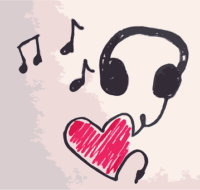Just before everything shut down for the pandemic, one of my hearing aids went on the fritz. It still worked, but it started emitting a loud, high-pitched whine whenever it felt like it. Imagine someone screaming in your left ear at random intervals. So, I stopped wearing it, obviously.
I got by with the right aid – many people wear only one because only one ear has lost hearing. That’s not my situation, but I was coping okay. (Don’t ask Derek if he agrees because he will tell you how often I asked him to repeat things he said, or was said on TV, or that someone else said, etc!)
Finally, things eased up enough where I could go to my audiologist’s office. We had been communicating via email about a new set of hearing aids. My old pair lasted about seven years, which is pretty good. I had taken a demo pair for a test run just before COVID-19 hit us hard, and decided I didn’t want a boatload of bells and whistles. All I wanted was to hear better, not to hear the International Space Station.
Well, there’s no such thing as simple when it comes to hearing aid technology. Like all computers and electronic gizmos, they are constantly being upgraded – in my opinion, by people who don’t have to wear them.
Example: my new ones have two microphones each instead of one. Great, right? One of the biggest issues with mic placement is that it gives the wearer perfect sound behind you, not in front. At the movies, you hear every crinkle when the person in the next row behind you slowly unwraps a candy, but what’s happening in the film isn’t nearly as loud.
The second mic is lower on the part that hangs behind the ear. That’s how it has to be. But the trouble arises when I lean back on my couch. The bottom mics struggle to make sense of sound when they’re up against the upholstery. Their solution is to emit a loud hiss. Not ideal.
The aids are super sensitive which is supposed to be an advantage. If I stand near an oven fan, for example, they’ll detect the constant noise and adjust so that it’s diminished. Nice! But they make a mess of a TV show or movie that has music in its soundtrack. (Just about every program ever made!) They tune themselves for the music, but when it stops abruptly they don’t know what to do so they hiss for 15 seconds until they adjust back to the dialogue.
It’s a little like watching television with a snake on your shoulder.
Now, add eyeglasses and mask elastics to your ears and try not to lose your hearing aids, hmmm? I do have a thingy that holds the elastics behind my head but there’s still interference.
I share this information not to complain, but to remind you that even though there’s a “solution” to a disability, it’s not the same as not having the issue to deal with in the first place. I’m sure this applies to every type of disability, no matter how big or small. (I consider mine a minor one.)
And if you’re wondering how I can work with audio despite having hearing loss, it’s simple: my loss is moderate and I use Bose headphones when I edit. They provide great sound and, coupled with hearing aids, allow me to hear the nuances of my recordings.
Beethoven had hearing loss and eventually became deaf. Black Eyed Peas’ Will.i.am, Grimes (who is just 32), Phil Collins, Pete Townshend, Neil Young, Huey Lewis and many others continue to play and make music despite their hearing issues. Several of my fellow radio hosts and producers, past and present, have hearing loss. It doesn’t mean an end to working with sound. But it is a cautionary tale for those who are starting out in the sound business. Turn down those headphones!


For those starting out in the sound business, another tip is investigate bone-induction headphones as an alternative to the more traditional headphones. Won’t be suitable in all cases but can give the ears a break. Work great with smart phones though.